Labels We Love: Ghostly International
All week long, XLR8R is presenting its annual focus on Labels We Love. Click here […]
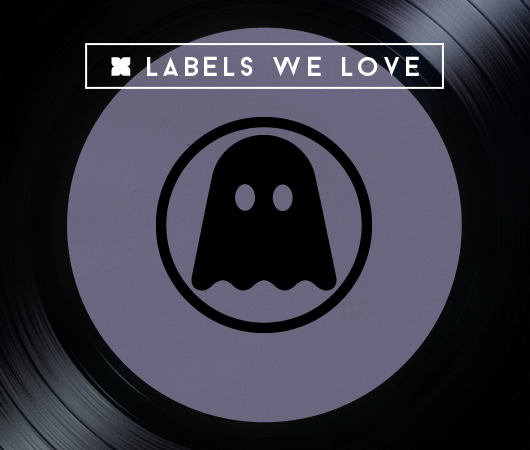
Labels We Love: Ghostly International
All week long, XLR8R is presenting its annual focus on Labels We Love. Click here […]

All week long, XLR8R is presenting its annual focus on Labels We Love. Click here to check out the rest of the series.
Before there was a Ghostly International label, there was the logo. A simple caricature of a ghost, it wasn’t too far off from the bad guys that appear in Pac-Man, its eyes wide and vacant, with a jagged run of triangular cuts along the bottom. As a teenager, Sam Valenti IV, the founder of Ghostly, would put it on mix CDs and roughly mixed compilations of his own production work when he was just beginning to DJ and produce. “I Was DJ Spaceghost in high school,” Valenti says. “I liked ‘ghostly’ as a word. I liked that it was two syllables. I liked that it was an adjective as a brand—you’re describing it. Ghostly can take on different feelings. It can be positive. It can be negative. It felt right.”
The logo might have been around before Valenti went to college at the University of Michigan in Ann Arbor, but once he got there in 1998, it didn’t take him too long to build a label to match the aesthetic that had been lurking in the back of his mind since was 15. In his first week at school, Valenti met Matthew Dear, now one of Ghostly International’s flagship artists, at a party. “He was a year older than me, and he was just making tracks,” Valenti says. “I was just walking around. I knew I wanted to do a label, so I was like, ‘Hey, you make music, we should get lunch next week. It was a very fertile time… making a record label seemed very accessible. You could just make a record and if it was good, people would play it.”
Sam Valenti (by Jessica Miller)
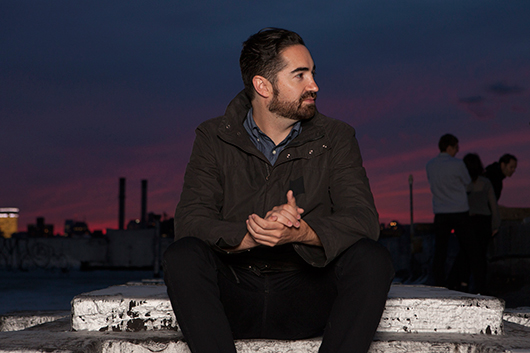
When Dear met Valenti, he was still figuring out his place as an artist. “I had done a collaboration with some guys from Ann Arbor that got released on a Frisbee Records 12-inch,” he says. “But they forgot to include my name on the release. I remember feeling so upset, as if that was my big break and I had missed the bus.” The relationship between Dear and Valenti developed quickly, though. “I was playing a live techno set in the basement of a house party. It was pretty rare to see someone with a sampler and synthesizer playing that kind of music at that kind of party, so Sam approached me and we immediately hit it off,” he says. “Dance music was still very much the ugly stepchild of popular culture then, so people like us sought each other out.”
It turned out that Ann Arbor, because of its close proximity to the techno mecca of Detroit, was a great place to find like-minded people that just wanted to make good music and who weren’t overly obsessed with the endless, perpetually fruitless quest to attain nonexistent music cool points. “I think a lot of car culture… maybe that’s the genesis of Detroit label culture,” Valenti says. “The first wave of Detroit artists—their parents worked in the auto industry. Brand meant something more than just marketing. It was symbolic of a family or philosophy. I think, subconsciously, Detroit techno is related to factory. Not in an assembly way, but in a brand sense.” It’s fitting then that Ghostly’s first release was “Hands Up for Detroit,” a split 12″ featuring tracks from Dear and Daisha, another young producer who was also making a name for himself as Disco D.
Matthew Dear (by Philistine DSGN)
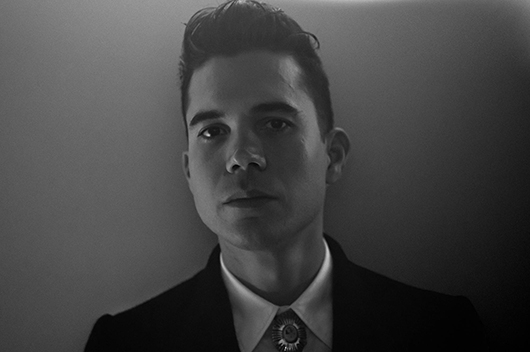
Dear’s involvement in the label might have partially been borne of circumstance, but he’s also the catalyst for Ghostly’s entire open-ended aesthetic. Rather than stick to one genre, he hops all over the place, welding minimal techno to pop or finding a common ground between country and dance music (not in a bad way). “From the beginning, Ghostly’s sound has been completely open ended,” Dear says. “The label allowed me to define my sound. I was never pigeonholed into needing to sound like my last record. I could sample my guitar and try to write a song with a country melody and Sam wouldn’t blink an eye.” This freewheeling attitude is an essential part of the label. Like Matthew Dear, Ghostly is defined by the fact that it’s undefinable.
Along the way, Valenti launched a sub imprint, Spectral Sound, which is dedicated to more traditional dance releases, as well as Drip.fm, an important music-sharing platform (more on that later). Ghostly now has a full staff, including Jeff Owens, the soft-spoken label manager who’s essential to the day-to-day and helps artists figure out exactly what they should be doing on stage. There’s even a proper office at the Pencil Factory in Brooklyn’s Greenpoint neighborhood; it’s an old, raw warehouse space that, over the last few years, has somehow turned into a hub of the independent music industry, housing multiple labels, distributors, and publicity companies. Situated in the middle of all this is Valenti, who is now miles away from the kid bumbling through the nascent stages of running a record label without a guidebook.
Jeff Owens and Sam Valenti (by Jessica Miller)
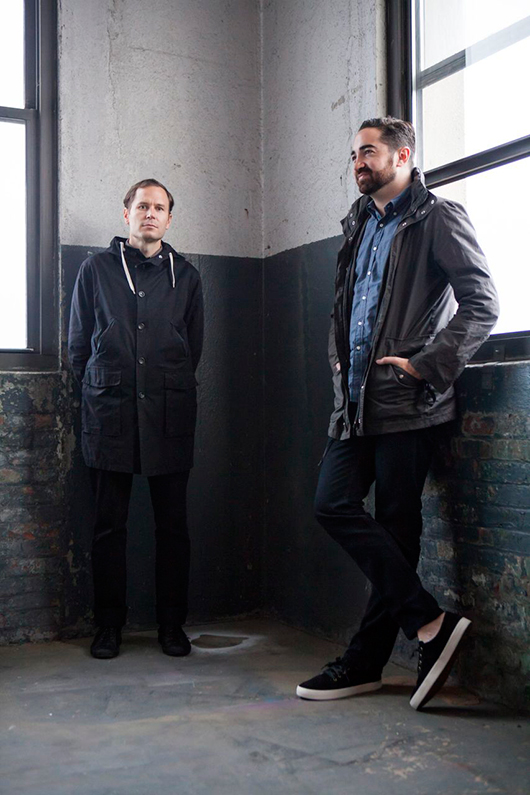
Besides moving into this accidental industry juggernaut of a building, Ghostly has had a particularly notable couple of years. Under normal circumstances for an independent label, that would mean the signing of an artist who rocketed to flash-in-the-pan superstardom, but with Ghostly, it’s always been about slow and steady consistency, even when the music varies so much from release to release. The label’s success largely has to do with the way it’s been reliably pushing the boundaries of what people might expect, to a point where what’s expected has suddenly become more of a way of living than a specific sound.
The average Ghostly release might oscillate between functional dance music and misty, sepia-toned ambient. Or it could be both. Fort Romeau‘s “Trust Me” builds a nostalgia-inducing piano house loop into an ecstatic pile of tangled synths that at once evokes a vague bygone era of good times while simultaneously sounding very vital and right now. It’s a somewhat traditional song, but it’s got a lot of heart, and, like the rest of the Ghostly catalog, resists simple genre classification. “You had to break people’s preconceptions of what we were,” says Owens. “Everyone wants to box a thing [in] to make sense of it. We’ve always been good at tearing that box open a little bit. Showing that these genres—they all make sense to us because we have, as humans, different emotions. We wouldn’t be able to be just one feeling.” Valenti agrees. “I think there’s a humanism [to Ghostly releases]. You can really feel the artists there. These are people that have mastered the tools, even if they’re figuring them out as they go. They have a pretty strong grasp of what they’re doing.”
The Ghostly International office (by Jessica Miller)

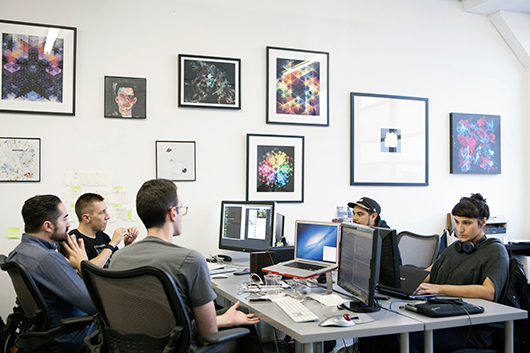
A great example of this is Ghostly’s signing of Gold Panda, a London-based artist that joined the label in 2010. His music is instrumental, but autobiographical as well. His albums are often jittery, built on nervous drums that feel roughly stitched together, like he dreamed them and is frantically trying to capture his dream before it fades away. Listening to a Gold Panda album is not so different from reading his diary. Titles of songs from his new album, Half of Where You Live, include “The Most Liveable City,” “We Work Nights,” and “My Father in Hong Kong 1961.” It’s like we’re spying on his daily conversations, the quiet moments when he’s sifting through a box of old family history. Gold Panda’s music is a travelogue of his past, designed to soundtrack our present. “I didn’t like a lot of vocals because they were too tangible and too normal,” he says. “Being a really emotional teenager, I wanted music that could soundtrack the way I felt. I could attach my own meaning to it.” Valenti echoes this sentiment. “It’s your story too, if it’s instrumental music,” he says. “It’s yours to decide. There’s a strong level of expressionism and abstraction, but there’s also a strong level of minimalism. There’s a hyper-emotional motive, but it comes in and out of focus.” Tadd Mullinix, who records as Dabrye, Mullinix, and about a billion more aliases has also used Ghostly as an open-ended platform for exploring his multi-genre, largely instrumental interests, without feeling like he has to shoehorn anything into a pre-existing alias. “A lot of what we like in a piece of music depends on musical context,” he says. “What we find interesting, like subversion of or a return to a traditional theme or a change in recording technique can be appreciated because it happens in a specific environment. But when an LP or piece is hodgepodge, we can’t really appreciate or understand what an artist is saying.”
In 2011, Polish artist Jacaszek released Glimmer, one of the label’s most emotionally heavy, beautiful, and draining albums. Sonically, it’s about as far as possible from Gold Panda’s scrappy, neurotic instrumentals, but through lurching strings and patches of glitchy, warped synths, Jacaszek, like Gold Panda, is able to use the instrumental format to create mood pieces that exist in the hazy realm between personal memory and universal experience. Glimmer is an open-ended emotional work that is meticulously presented from the music right down to the artwork. “Glimmer didn’t have any precise concept behind it,” Jacaszek says. “I was searching for a soundscape, yes. Look at Glimmer‘s album cover. If you have ever seen old stained gold with all the light reflections—this is one of the images I had in my mind.” The artwork was designed by Michael Cina, one of the first designers to be part of the Ghostly visual roster, which now also includes 19 other artists, including photographer Tim Saccenti and illustrator Deanne Cheuk.
Gold Panda
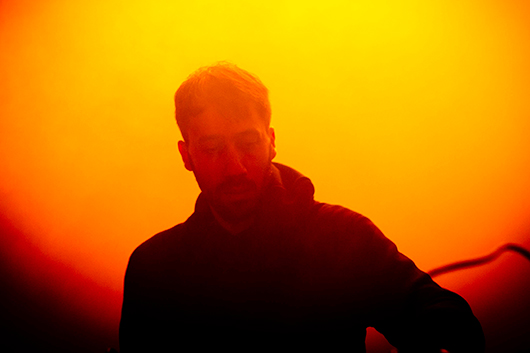
Tadd Mullinix (a.k.a. Dabrye)(by James P. Morse)
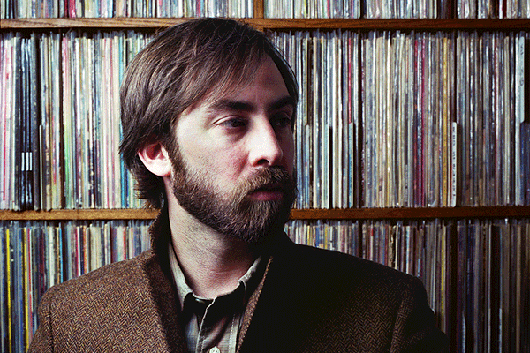
Cina’s work for the label is diverse—Shigeto’s 2013 record cover for No Better Time Than Now is a mess of waxy colors bleeding into each other. It doesn’t look too far from what happens when you melt crayons on a radiator. In direct contrast to this smear of abstraction, which Cina also used brilliantly on multiple Matthew Dear records, as well as Fort Romeau’s recently released Stay / True EP, is his typographical work, which is blocky and solid, playful and never bland.
Running a record label is difficult. Artists change, priorities shift, and, often, a label panics, abandoning the very artists that defined it in the first place. Ghostly works in direct opposition to this, fostering artists as they grow, develop, and even spawn side projects. It’s this attitude that allows Cina to experiment with different visual styles, just like it allows Todd Osborn, who mostly records as Osborne (“Everyone used to spell my last name wrong in reviews, so ‘Osborne’ was decided on,” he says)—another flagship Ghostly artist that Valenti met when he shopped at his record store in Ann Arbor—to record under an inventive series of aliases. “I make quite a lot of genres and bits of things with no purpose in mind unless it’s a remix for someone,” Osborn says. “For the 2008 LP [titled Osborne], Sam picked through many songs over maybe a five-year timespan and came up with what he thought was a cohesive bunch. The next Osborne LP has at least one track that’s 15 years old.” Valenti’s sequencing help shows that Ghostly isn’t interested in being “just” another record label searching for a new hit. It also goes a long way in explaining the tongue-in-cheek “International” part of its name.
Todd Osborn (a.k.a. Osborne) (by Will Calcutt)
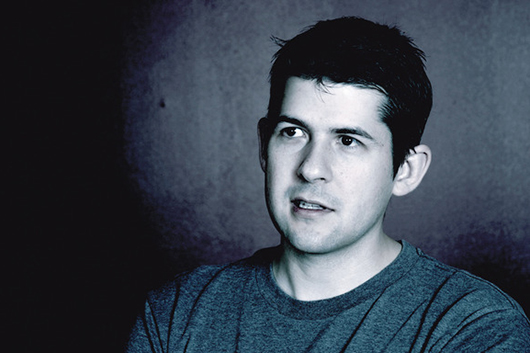
Jacaszek
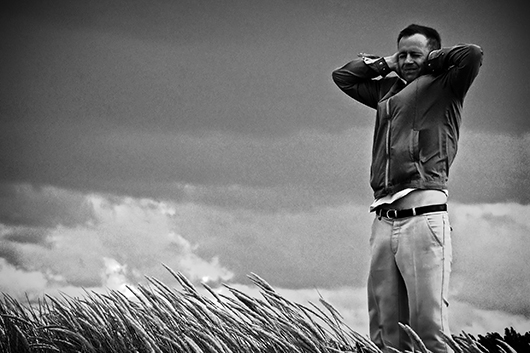
Love or hate the phrase, Ghostly International is actually a lifestyle brand, and the reason it’s actually a lifestyle brand is because when one removes all the empty marketing speak that a phrase like “lifestyle brand” connotes, there’s actually a genuine idea at the heart of it all. Ghostly still feels like a label as lifestyle—a labor of love that encompasses music and art and notches them seamlessly into our daily lives while treating the album as an object still worth some reverence. “The early Ghostly branding had a lot of faux corporate [speak],” says Valenti. “It was more of a thing at the time. It’s serious, but it’s not po’ faced.”
In the hands of a label with less of a long-term vision, even talking about branding as a joke could be dangerous, but while Ghostly started small and humble, it actually grew into the semi-jokey “International” that’s always been part of the name. (Earlier this year, the label even collaborated with designer eyewear brand Warby Parker on a limited-edition run of high-end sunglasses.) Now Valenti, Owens, and their diverse stable of artists—many of which were selected thanks to the A&R prowess of longtime Ghostly affiliate Jakub Alexander, who also makes his own music as Heathered Pearls—have created a label that appeals to both obsessive completists and casual listeners, building something that hits all the sweet spots of the way we consume music.
Fort Romeau
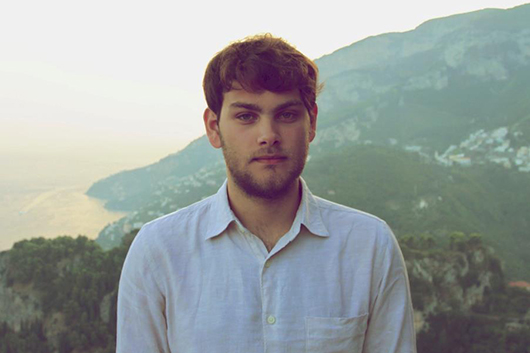
Ghostly staff (L-R Sam Valenti, Jakub Alexander, Molly Smith, Jeff Owens) on the Pencil Factory roof (by Jessica Miller)
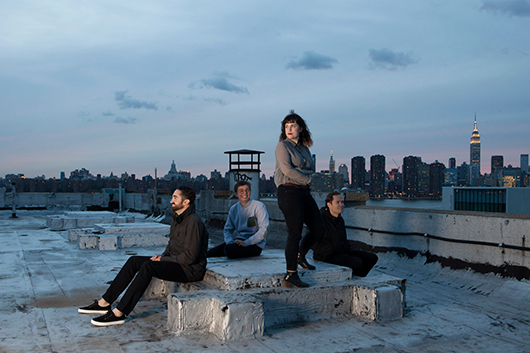
That said, as Ghostly moves into the future, Valenti is well aware that the ways in which music is being consumed are constantly changing. While the imprint continues to turn out lavish vinyl releases, in 2011 Valenti, along with Miguel Senquiz, founded Drip.fm, a music downloading service that works with labels directly to get their music to their fans. Essentially, how it works is that users pay to receive “drips” from specific labels; of course, Ghostly has always been one of the options—the service actually debuted with Ghostly as the only option—but the Drip.fm roster has quickly expanded and now includes Stones Throw, Mad Decent, Ninja Tune, Dirtybird, and a myriad of other imprints. Participating labels send subscribers high-quality MP3s of each record as it’s released, but also make a point to send out forgotten back-catalog classics or important crowd pleasers when it’s relevant. Basically, users are paying a subscription fee that grants direct, instant access to a sizable chunk of a label’s entire catalog, but unlike the larger, more ubiquitous subscription services out there, Drip.fm doesn’t haphazardly throw the the whole thing at the wall.
“I love the idea of there being a complete set,” Valenti says. “Will [Calcutt, a Ghostly visual artist] was pointing to Miguel [Senquiz]’s shelf and he was like, ‘That’s your record collection in the future: a vase and some books and a vinyl toy.’ He was trying to say we’re not going to have these little shelves of neatly organized media. We’ll still have vinyl for fetish, but it’s going to be objects and stories. We’re trying to break the mold about what collecting is. The music is always the most important thing, but how you think about it is how you see it. If you think about the album, the album cover is in your head, the store you bought it at. Who you were when you were listening to it. Music is the heart of everything we do.”

